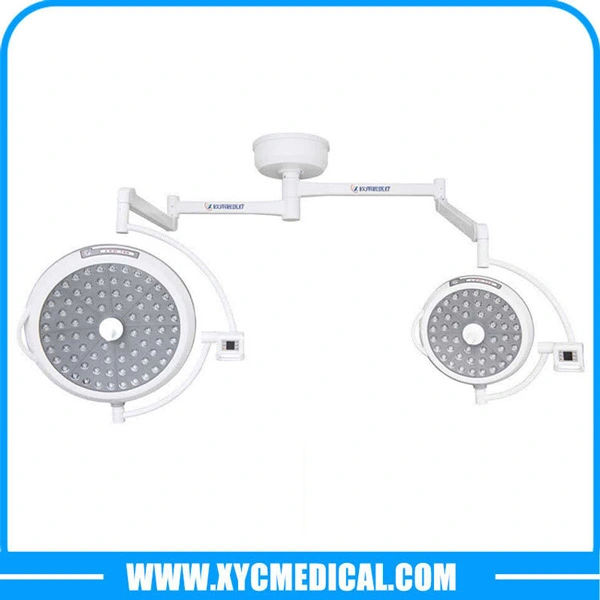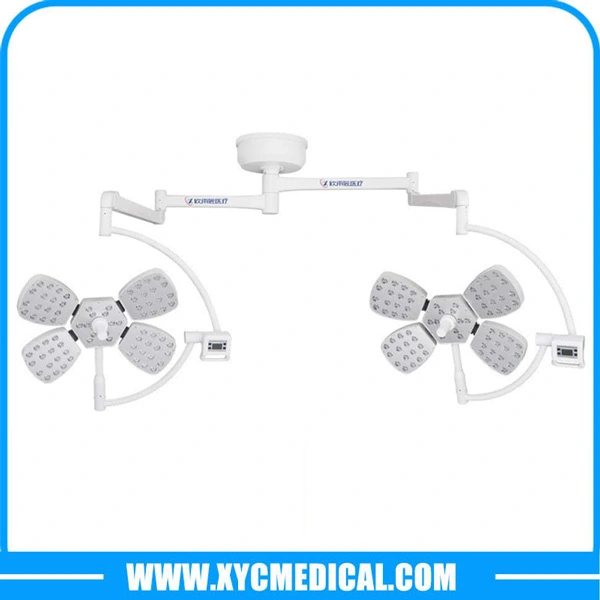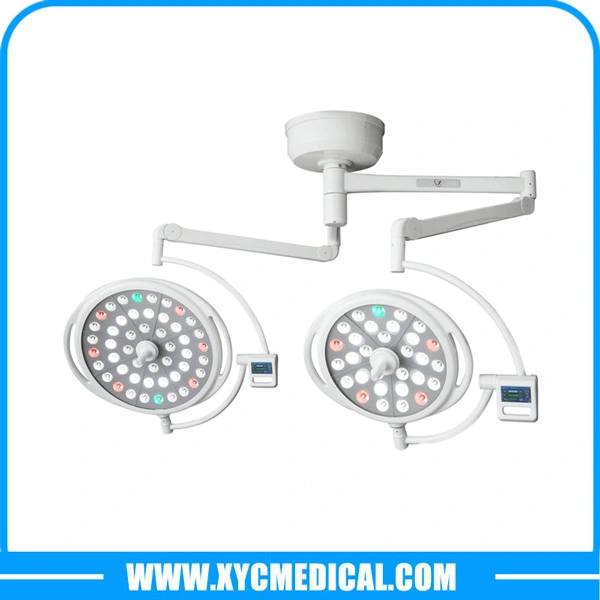Shadowless Surgical Light - Take You Through the Operating Room Light
Abstract: what is a shadowless surgical light? A surgical light is a kind of operating room light with great luminescence intensity, arranged in a circle on a lampboard to synthesize a large light source. In this way, it shines light at different angles on the table to ensure it is bright enough without creating a noticeable main shadow, hence the name Shadowless Surgical Light. Below is a detailed understanding of the principle of surgery lamp, technical requirements of the relevant knowledge!
The shadowless surgical light is used to illuminate the surgical site for optimal observation of small, low-contrast objects at different depths of incision and body cavity. Since the operator's head, hands and instruments may cause disturbing shadows on the surgical site, as many shadows as possible should be eliminated and color distortion minimized when designing surgical lamps. In addition, operating room light must be able to work continuously for long periods of time without giving off too much heat, which can cause discomfort to the operator and dry out tissue at the site of surgery.
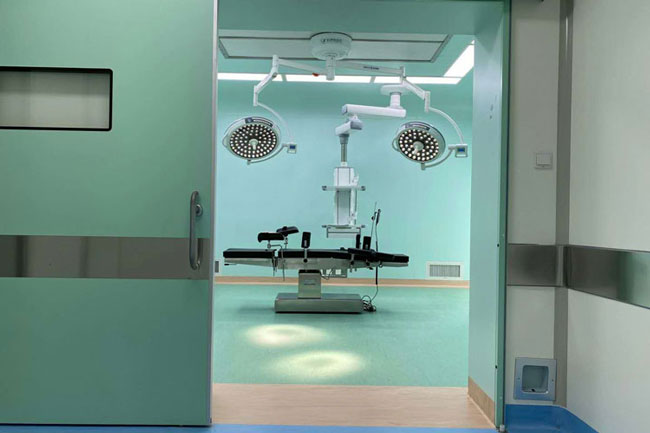
Principles
The shadowless surgical light aren't actually "shadowless", It only diminishes the original shadow and make it less noticeable. Shadows are formed when light hits an object, shadows are different everywhere on earth. If you look closely at the shadows under the lights, you will notice that the middle part of the shadow is particularly dark and the surrounding color is slightly lighter. The particularly dark part in the middle is called original shadow, the surrounding gray part called penumbra. All these phenomena are closely related to the linear propagation of light.

If you put a pillar-shaped tea cone on the table, next to a candle lit, the tea cone will cast a clear shadow. If two candles are lit next to the tea cone, two shadows will be formed that overlap and do not coincide. The overlapping part of the two shadows completely without light to shine, is all black, this is original shadow; The place where only one candle can shine next original shadow, is half light and half dark half shadow. If you light three or even four candles, the original shadow part will gradually shrink and many layers will appear in the penumbra part. Objects can produce shadows consisting of original and penumbral shadows under electro-light, is also the same reason. Obviously, the greater the density of the light source for luminous objects around the irradiated object, the smaller the original shadow. If we light a circle of candles around the tea cone, the original shadows will disappear completely, and the penumbra will be too light to see.
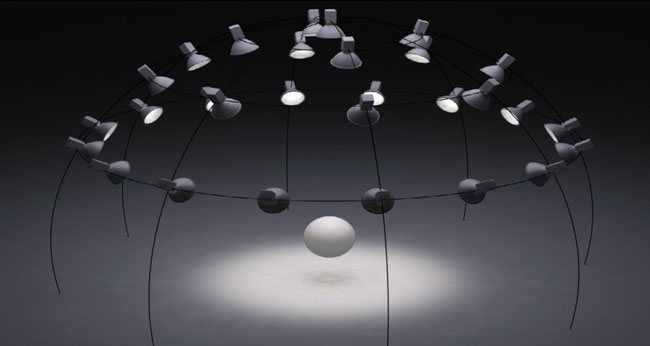
Based on these principles, the scientists created a surgical shadowless lamp for surgery. It arranges lamps with high luminous intensity in a circle on the light panel, composing a large area of light source. In this way, light can be shone onto the operating table from different angles, ensuring that the surgical field has sufficient brightness, while not producing a significant original shadow, hence the name shadowless surgical light.
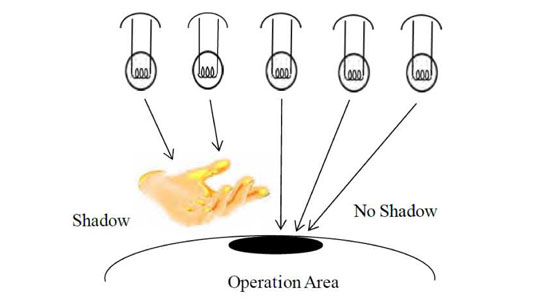
Composition
The shadowless surgical lights are usually composed of one or more lamp heads, fixed to a cantilever and can be moved vertically or in a circle. The cantilevers are usually mounted on a fixed combination(lamp base), and can revolve around it. The shadowless light for surgery is flexibly positioned with sterilizable handle or sterilizable hoop (curved track), with automatic brake and stop function to manipulate its positioning, maintain adequate space above and around the surgical site. Lamp base can be mounted on fixed points in the ceiling or walls, or on tracks in the ceiling.
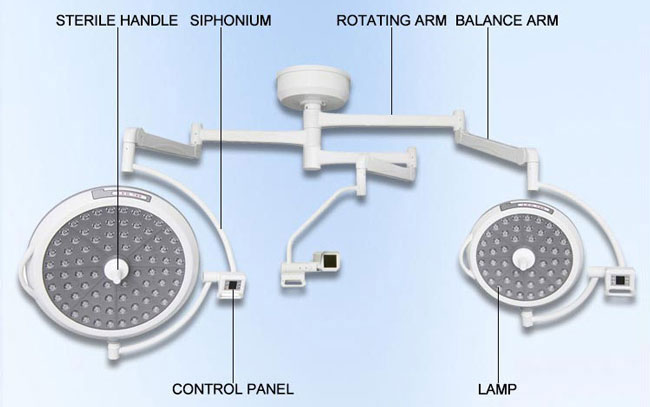
Types of surgical lights
The development of operating room light has gone through from multi-hole surgical light, overall reflection halogen surgical light, LED surgical light, etc.
Multi-hole surgical light: It's the traditional operating room light, mainly through multiple light sources to achieve the shadowless effect, adopts light sources from different positions for focus, providing illumination for surgical operations and medical examination, reducing shadows produced by different parts of medical workers.
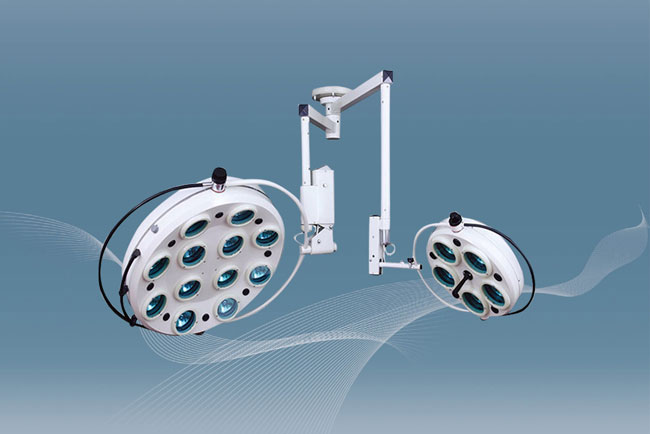
Overall reflection halogen surgical light: It consists of lamp head, a mechanical cantilever system and corresponding control circuit. light source is a halogen bulb. CAD/CAM designed squamous reflector system, which is formed by industrial stamping and has multiple reflectors that overlap light to form uniform beams. This uniform beam of light is not only as bright as sunlight, but also manages to remain very even when the surgeon's shoulder or head is partially blocking the light source.
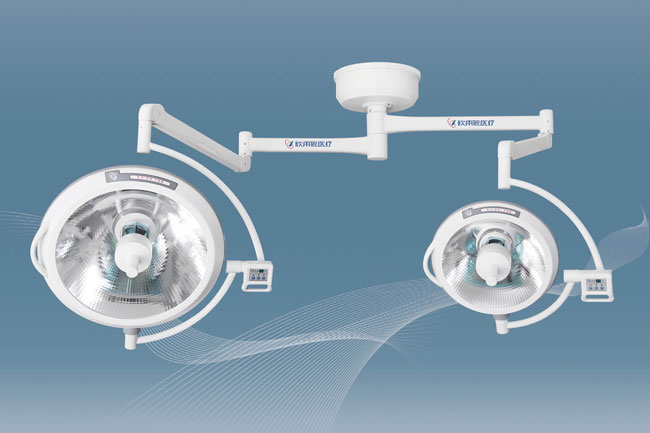
LED surgical light: With the continuous development of light-emitting diode LED technology, especially the development of high-brightness white LED, LED surgical light with its brilliant shape, long service life and natural cold light effect and the concept of energy saving gradually come into people's view, is the upgraded product of general operating room light, excellent shadowless lighting effect, and strive to enhance patient satisfaction and comfort at the same time, to provide an ideal and high-performance working environment for medical personnel, The superiority of LED operating light is gradually understood and accepted by users.
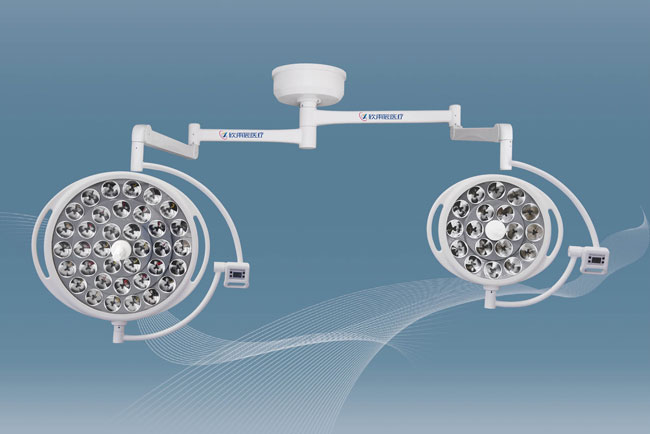
Usage
Surgical lights should have one or more transformers in a remote control box on the ceiling or wall, to convert the input supply voltage to the low voltage required by most lamps. Most surgical lamps have dimming controls, and some products have the ability to adjust the light field range to reduce light around the surgical site (reflections and flashes from sheets, gauze or instruments can be uncomfortable to the eyes).
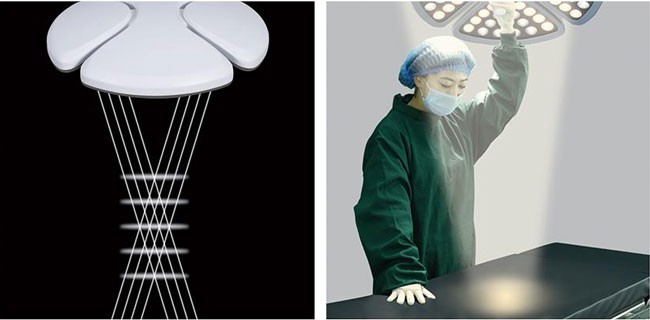
Routine maintenance
(1) Daily inspection
- Bulb working condition
Method: Place a piece of white paper on the working area, replace the bulb if there is a curved shadow.
- Disinfection handle in place
Method: "Click" twice during installation.
- Cleaning: Use a weak alkaline solvent (soapy water) to clean the appearance of sassafras; avoid chlorine detergent (metal damage) and alcohol detergent (plastic and paint damage)
(2) Monthly inspection
Mainly check that the backup power system (battery) is normal. Method: Cut off the power and see if the backup power is activated.
(3) Bulb life
Halogen bulb, i.e. bulb of overall reflection surgical light, lifetime average 1000 hours; Bulb of LED surgical light, lifetime is basically about 60,000 hours. For lamp holder, it's basically replaced once a year.
(4) Annual inspection
Four steps for maintenance (performed by a licensed engineer)
1, Fastening.
1.1 Power cord connector (Control box input and output place)
1.2 Screws at each joint.
1.3 Brush
2, Adjust.
2.1 Rotary limit
2.2 Bulb working voltage
2.3 The joints brake
3, Check
3.1 Verticality of the suspension tube and balance of the suspension system.
3.2 Whether the screws are tightened normally at each connection point?
3.3 Is it normal to brake when each joint moves?
3.4 Rotary limit
3.5 Heat dissipation effect
3.6 The state of lamp holder and bulb.
4, Inspection
4.1 Installation of disinfection handle
4.2 Light illumination
4.3 Diameter of the light spot
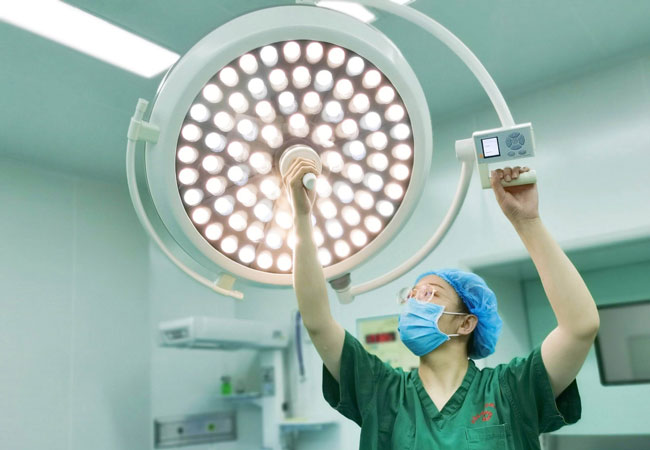
Five Guarantees
(1) Brightness Guarantee
Surgeons in the operating room must be able to accurately distinguish contours, colours and movements. Therefore, as a surgeon, the intensity of light must be close to the quality of sunlight. 100,000 lux light, defined as the brightness of the midday sun. On top of that, most of the light is absorbed rather than reflected in the operating environment, meaning the operating theatre light must provide greater brightness.
The operating lamp has a maximum brightness of 150,000 lux and can be adjusted continuously. Only at this brightness can the surgeon have 50% of the visible light in the surgical area.
(2) No heat production guarantee
Bright light is accompanied by heat. If heat is generated during surgery, it can be very harmful to both the doctor and the patient. So, during surgery, all we need is light, no heat.
(3) Pathogen-free guarantee
One of the basic elements of surgery is that the number of pathogens must be kept to a minimum during the procedure. Therefore, we used the best surgical light modeling design, with appropriate placement (behind the surgeon), can effectively control the number of pathogens.
(4) Color temperature guarantee
Color perception is determined by the color temperature of the light, for example, the color temperature of daylight is 5600 kelvin, the light perceived by human studies at a color temperature of 5600 kelvin is white light. Therefore experts recommend operating room light should have a color temperature of at least 4,000 Kelvin, to produce the same light as daylight treatment. For the human eye, daytime colors are clearer, diagnoses are more accurate and the eyes of health care workers are not tired from working long hours.
(5) No shadow guarantee
Surgical lighting must have good shadow-free effect, which is an important characteristic and performance indicator of operating room light. Any shadows formed in the surgical field will hinder the doctor's observation, discrimination and surgery. In addition to providing adequate illumination, a good surgical light source should have a high shadowless effect to ensure a certain brightness in the surface and deep tissue of the surgical area.
Different angles of light are focused on the illuminated surface by using special lamp bulbs and reflectors. Objects illuminated by the surgical light encounter cross-light interplays, turning the shadows reflected on the illuminated surface into extremely slight, a clear view of operation can be obtained during surgery.
Article From: Shandong Xinyuchen Medical Equipment Co., Ltd.





